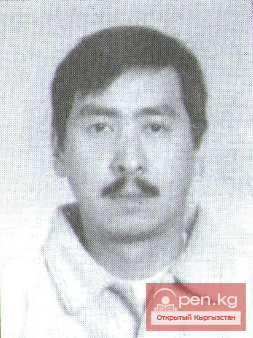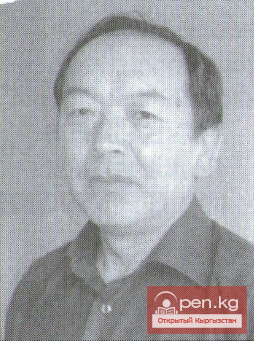Population of Kyrgyzstan since the beginning of independence
After the collapse of the Soviet Union, a new wave of migrations began, peaking between 1991 and 1993. By mid-1993, out of 500 industrial enterprises operating under partial employment and production suspension, only 100 were active. Ten major factories and plants were completely idle, and in 1989, the share of the population engaged in industrial production was 20.5%, while in 1994 it dropped to only 14.6% (Kyrgyz... 1995. p. 19).

As a result of migrations and the demographic situation during the years of independence, significant changes occurred in the ethnic composition of Kyrgyzstan. Between the National Population Censuses of 1999 and 2009, there was an increase in the share of the titular ethnicity in the population of the republic. This is facilitated, firstly, by the sustained high natural growth among the Kyrgyz against the backdrop of depopulation among people of European descent; secondly, by the ongoing emigration to Russia. Other post-Soviet countries and distant foreign lands saw representatives of the so-called non-indigenous population (Population... 2011, p. 52); thirdly, by the return migration of Kyrgyz from other republics of the former USSR. Approximately 10,000 Kyrgyz found refuge in southern Kyrgyzstan during the civil war in Tajikistan (Population... 2004. p. 123).

In the Chui region alone, the number of Kyrgyz increased by 103.3 thousand people. In this region, in 1999, their share was 44% compared to 29% in 1989. Although the Kyrgyz constituted a majority throughout the region, they became the main ethnic group in the vicinity of the capital. As a result of internal rural-urban migration, rural Kyrgyz replaced the departing Russian-speaking urban residents and settled mainly in the southern and eastern districts of Bishkek.
From 1999 to 2009, the total population of Kyrgyzstan increased by 540 thousand people, or 11.2%. Among the Kyrgyz, the most numerous ethnicity, there was also the most intense absolute growth - 676.6 thousand people over 10 years, or 21.6%. The Uzbeks became the second largest group in terms of both numbers and growth rate, with an increase of 103.5 thousand people, or 15.6% (Table 4). The share of Kyrgyz in the country's population increased from 52.4% in 1989, 64.9% in 1999 to 70.9% in 2009. The share of Slavic peoples continued to decline: from 14% in 1999 to 8.3% in 2009 (Table 5).
As of the beginning of 2015, the republic had a total population of 5,895,062 people, including 4,292,062, or 72.9%, who were Kyrgyz.
As of the beginning of 2015, the number of Uzbeks was 85,698, Russians - 364,571, Dungans - 66,140, Uyghurs - 53,525, Tajiks - 51,411, Kazakhs - 34,122, Tatars - 27,688, Koreans - 16,828, Ukrainians - 13,501 people (Demographic Yearbook. 2015. p. 101).

In the early 2000s, about 500 thousand Kyrgyz lived outside the borders of Kyrgyzstan, including 225 thousand in Uzbekistan (mainly in the border areas of the Fergana Valley), 66 thousand in Tajikistan (Pamir and Western Kuntum in the Karakoram), 32 thousand in Russia, 11 thousand in Kazakhstan, and 161 thousand in the Xinjiang Uyghur Autonomous Region of China (Table 6). Thus, 87% of Kyrgyz live within the borders of the Kyrgyz Republic (Asankanov, 2010. p. 51; Population... 2004. p. 81)
Population of the Kyrgyz SSR from 1959 to 1991












































